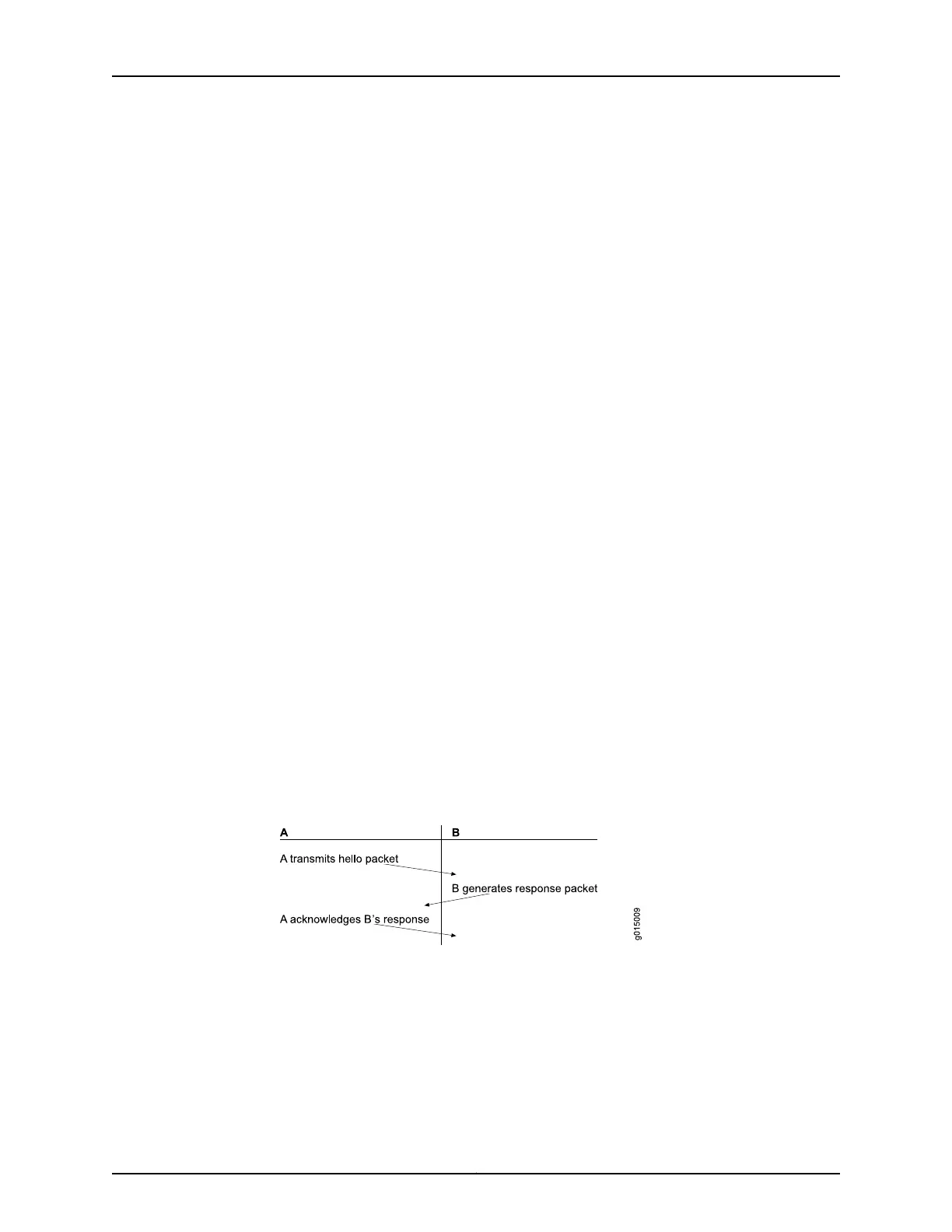router form adjacencies with other routing devices.) Adjacencies determine the distribution
of routing protocol packets. Routing protocol packets are sent and received only on
adjacencies, and topological database updates are sent only along adjacencies. When
adjacencies have been established, pairs of adjacent routers synchronize their topological
databases.
A routing device sends LSA packets to advertise its state periodically and when its state
changes. These packets include information about the routing device’s adjacencies,
which allows detection of nonoperational routing devices.
Using a reliable algorithm, the routing device floods LSAs throughout the area, which
ensures that all routing devices in an area have exactly the same topological database.
Each routing device uses the information in its topological database to calculate a
shortest-path tree, with itself as the root. The routing device then uses this tree to route
network traffic.
The description of the SPF algorithm up to this point has explained how the algorithm
works within a single area (intra-area routing). For internal routers to be able to route to
destinations outside the area (interarea routing), the area border routers must inject
additional routing information into the area. Because the area border routers are
connected to the backbone, they have access to complete topological data about the
backbone. The area border routers use this information to calculate paths to all
destinations outside its area and then advertise these paths to the area’s internal routers.
Autonomous system (AS) boundary routers flood information about external autonomous
systems throughout the AS, except to stub areas. Area border routers are responsible
for advertising the paths to all AS boundary routers.
OSPF Three-Way Handshake
OSPF creates a topology map by flooding LSAs across OSPF-enabled links. LSAs
announce the presence of OSPF-enabled interfaces to adjacent OSPF interfaces. The
exchange of LSAs establishes bidirectional connectivity between all adjacent OSPF
interfaces (neighbors) using a three-way handshake, as shown in Figure 27 on page 545.
Figure 27: OSPF Three-Way Handshake
In Figure 27 on page 545, Router A sends hello packets out all its OSPF-enabled interfaces
when it comes online. Router B receives the packet, which establishes that Router B can
receive traffic from Router A. Router B generates a response to Router A to acknowledge
receipt of the hello packet. When Router A receives the response, it establishes that
Router B can receive traffic from Router A. Router A then generates a final response
packet to inform Router B that Router A can receive traffic from Router B. This three-way
handshake ensures bidirectional connectivity.
545Copyright © 2017, Juniper Networks, Inc.
Chapter 18: Configuring Routing Protocols

